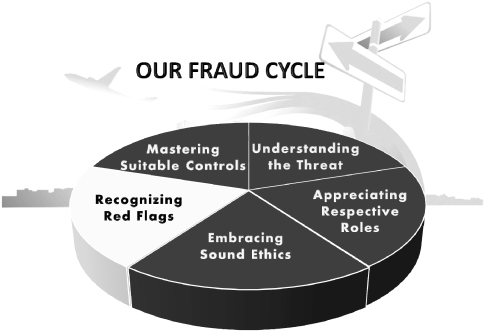13
The Ingredients of Fraud
As you have already seen, this book is based around the Fraud Smart cycle, which covers five key aspects of helping non-specialists get to grips with fraud at work. This is repeated in Figure 13.1.
Figure 13.1 The Fraud Smart cycle.

This chapter sits within the fourth part of the Fraud Smart cycle, Recognizing Red Flags, and covers the factors that tend to be in place when fraud occurs in the workplace. We are going to drill down in a little more detail into the concept of fraud and how it arises.
WHAT CAN GO WRONG?
There is a set of ingredients that can come together in a dangerous cocktail that promotes fraudulent behaviour. It is a good idea to appreciate these ingredients as a way of helping predict where fraud can happen, and then to look for red flags that suggest it is actually happening. Where the knowledge that fraud can lie hidden for some time is not present in managers and their staff teams, much could go wrong.
We can consider how problems can arise by looking at two brief illustrative case studies taken from the UK and the USA. The first describes a detailed fraud at a US law firm.
CASE STUDY
A Dallas law firm sued a former employee to recoup the $100 000 she allegedly stole from it. One of the shareholders argued that these types of thefts are difficult for law firms to deal with due to the embarrassment they can cause. The former employee ...

